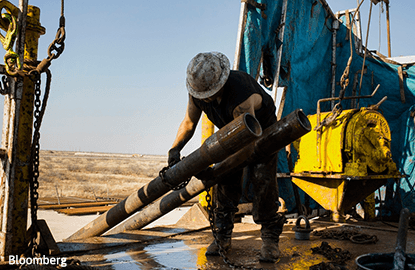
This article first appeared in The Edge Financial Daily, on March 8, 2016.

WHY is Saudi Arabia even prepared to discuss supply restraint? A second meeting has been pencilled in by the kingdom, Russia, Venezuela, Qatar and an unspecified group of oil producers (Organization of the Petroleum Exporting Countries [Opec] and non-Opec) to talk again about the proposed output freeze, according to Nigerian petroleum minister Emmanuel Kachikwu. But no one should read this as a sudden outbreak of altruism in Riyadh.
Non-Opec producers Mexico and Oman might hope to get an invitation to the meeting, and they have both joined in with supporting prices in the past. When the group does get together, though, one big market participant certainly will not be there: the US shale industry.
The US accounted for 80% of global supply growth between 2011 and 2014, according to BP plc. This surge, which showed no sign of ending when prices were above US$100 (RM407) a barrel, is what prompted Saudi Arabia to launch Opec on its present course of trying to drive high-cost crude off the market.
The question is why are the Saudis now willing to engage in a process aimed at raising the price of oil when the policy they initiated seems to be bearing fruit? The latest weekly data from the US Department of Energy shows the country’s oil production fell year-on-year for the first time since the shale boom began. As my colleague Alex Nussbaum wrote last week, “US oil drillers are finally beginning to buckle.”
The answer, of course, is that the Saudis probably do not want the price to rise much above its current level, at least not yet. At the same time, they do not want to be seen as deaf to the pleas of fellow Opec members who are much less able to withstand the price drop.
Whatever its shortcomings, Opec is still important to Saudi Arabia and the kingdom still sees value in at least a semblance of unity among the group’s members.
But make no mistake, Saudi Arabia’s oil strategy is based on self-interest. It sees a long-term strategic threat from the rapid growth of US shale and other high-cost oil. Importantly, the current policy draws no distinction between producers of high-cost oil outside Opec and those inside the group.
When Saudi oil minister Ali al-Naimi says he wants to kill off high-cost supply, fellow Opec members Venezuela, Nigeria and Angola are as much in his sights as US shale oil or Canada’s oil sands. Indeed, Venezuelan production has fallen far more than US output since November 2014.
So the Saudis will meet with other producers to talk about a production freeze that will not take any oil off the market, because nobody was planning to raise output anyway. Just do not expect them to pursue this new initiative too vigorously. They have already ruled out an output cut.
The US$8 a barrel rise in crude prices since just before the output freeze was first discussed is worth about US$2 billion per month to Saudi Arabia. But the last thing the kingdom wants is to stimulate a rebound in US shale oil production, or Venezuela’s Orinoco heavy oil. — Bloomberg
Julian Lee is a Bloomberg oil strategist. His opinions are his own and are not intended as investment advice.